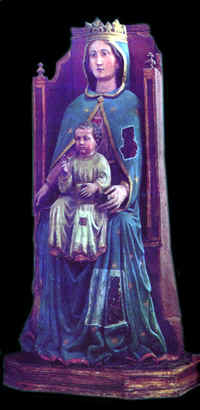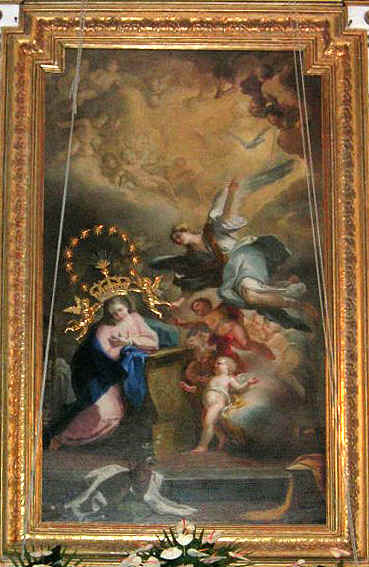April 18Annunziata, Naples, ItalyWhen Charles II of Anjou ruled the Kingdom of Naples, the brothers Giacomo and Nicolà Sconditi, knights of the Neapolitan house of Capuana, were taken prisoner during the Guelph wars in Tuscany. Held in the fortress of Montecatino, in 1297 they vowed to build a church to the Virgin, should they ever go home. Freed in 1304, they received from Giacopo Galeota, a noble of the same house, a piece of land outside the walls of Naples. On this land—once called the mal passo because travelers were so often assaulted there—the brothers built a little church in honor of the Glorious Virgin of the Angel Annunciate. There they founded a flagellant confraternity called the Compagnia dei Repentiti, which attracted many members from the nobility. The Repentiti founded a hospital for the poor, which in 1324 Queen Sancha transformed into a great complex that included a church, hospital, orphanage, and girls' school. The Holy House of the Annunziata was known for its Rueda or Wheel—a rotating structure with a deposit window for unwanted children, who would then revolve into the Holy House to receive care as "the Madonna's children." This system of dealing with unwanted children was not unique to Naples but was used in many parts of Italy until abolished in 1862. The church was completely rebuilt in the 1500s and again after a fire in the 1700s. It is now the Basilica dell'Annunziata Maggiore. In the third chapel on the left is an imposing sculpture of the late 1300s, the Madonna dei Repentiti (right), carved from a single tree trunk and known familiarly as "Mamma Chiatta," Chunky Mama—mother of the abandoned children, who wore lead medals bearing her image. |
 |
 |
Another beloved image occupies the
second chapel on the left, dedicated to the Virgin Annunciate: the altar
painting executed in 1782 by Giacinto Diano of nearby Pozzuoli (left). An
object of popular devotion, the work is surrounded by ex-votos left in
thanks for answered prayers. On April 18, 1915, the Virgin in the painting
was canonically crowned.
The parish celebrates its patronal feast on March 25, Feast of the Annunciation, with hourly masses and a special blessing for pregnant women. Sources:
Also commemorated this date:
|